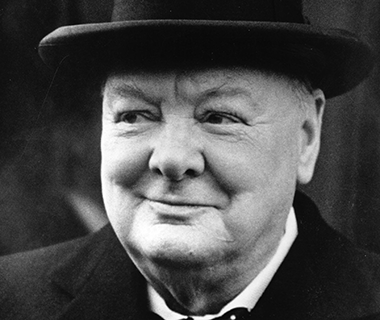Blenheim
August 1704 – BLENHEIM – 21st
Marlborough’s campaign – War of the Spanish Succession – Europe.
The battle of Blenheim was one of the turning points of history. Under the leadership of the first Duke of Marlborough, the Army of the Grand Alliance of Britain, Holland and Austria, aided by a number of the small German states, destroyed the combined armies of France and Bavaria, thus crushing the ambition of Louis XIV of France to rule Europe.
In pursuit of this aim, France had laid claim to Spain, including her colonial territories (encompassing parts of the Netherlands) following the death of King Charles II of Spain in 1700. There were, in fact, three claimants to the vacant throne. One dropped out, one was supported by France and the third by the Grand Alliance, led by Britain ( French domination of Europe would have meant economic ruination for Britain, even then a trading nation.).
War was declared in 1702 and at first the French were successful, securing much of Belgium and threatening Vienna, the capital of Austria. The French army enjoyed the reputation of being the finest in the world whereas the British were an unknown quantity in Europe.
Taking command of the Allied army in Holland, the Duke of Marlborough decided to relieve the threat to Vienna by marching across to the Rhine, and taking his enemies by surprise. This he did in, and near, the village of Blenheim, on the River Danube, where the French and Bavarian armies were bivouacing.
Although in bivouac, their position was extremely strong on a low ridge about four miles long near the river, with a fortified village at either end and a marsh in front. Each army was about 50,000 strong.
Because the French had been surprised , they were not evenly deployed. In particular, no less than 27 battalions of infantry, nine squadrons of horse, and some guns were actually in or close to Blenheim village, where they had been bivouacing, leaving only nine battalions of infantry with a strong cavalry force to guard the whole of the four-mile centre.
Despite the strength of the position, Marlborough decided to attack at once before his enemy could reinforce their centre. If he broke the centre he would win. He appreciated the need to prevent the French from getting out of Blenheim and therefore opened the battle with a commanding attack on Blenheim, on his left flank.
General Cutts, commanding on the left flank, designated Brigadier Archibald Row, the Colonel of the 21st, to lead the attack with his Brigade, five battalions strong, including his own Regiment. It had to be a frontal attack against all the odds- not merely approaching ten to one, but against a village fortified by hedges, a palisade and temporary barriers.
The attack was, in the words of John Buchan, ‘one of the great feats of human discipline in the world’s history’. Deliberately, steadily, the five battalions crossed the hundred and fifty yards of meadow which separated them from the palisade. They had orders to reserve their fire. When thirty paces from the enemy, a volley crashed into them and one man in three fell – but the advance continued without check. At last they were at the palisade. Row gave the order to open fire and a desperate battle began, each side shooting and bayonetting the other through the planks of the palisade.
Row fell mortally wounded and, in an effort to carry their Colonel off, Lieutenant Colonel Dalzell and Major Campbell, the commanding officer and second in command, were killed.
The 21st attacked again and again. The French counter-attacked and British and French infantry and cavalry surged back and forth across the meadow. British cavalry and Hessian infantry reinforcements arrived and finally the finest regiments of France were bottled up in Blenheim, since the survivors of the 21st and others had managed to occupy a position to the North and East of the village, completely covering the exits from it.
Marlborough was then able to attack the centre – an epic in itself – successfully breaking it and surrounding Blenheim. The French inside surrendered and in all they lost around 40,000 men in killed, wounded and captured. It was total victory – not merely the defeat, but the complete destruction of an army, which included the most famous French regiments then existing.
The war continued and Marlborough won other battles before in 1713 the Treaty of Utrecht brought a lasting peace to Europe. After Blenheim, the French were no longer seeking to dominate, but merely to hold what they had already won.
The 21st remained in the field throughout and shared in the Duke’s record, unique in the history of war, of ten years campaigning without ever losing a battle or failing to take a town he had laid seige to.
The 21st fully earned its proud title of ‘ Marlborough’s Own.’
Opening times
We are open Monday -Thursday 9am-4pm and Friday 9am-3pm. We are closed over Christmas and New Year.
Admission
Entry to the museum is FREE although donations are most welcome. If you are bringing a larger groups it's best to let us know in advance.



Get in Touch
- call us
0141 332 5639
- our address
518 Sauchiehall Street, Glasgow, G2 3LW, Scotland
